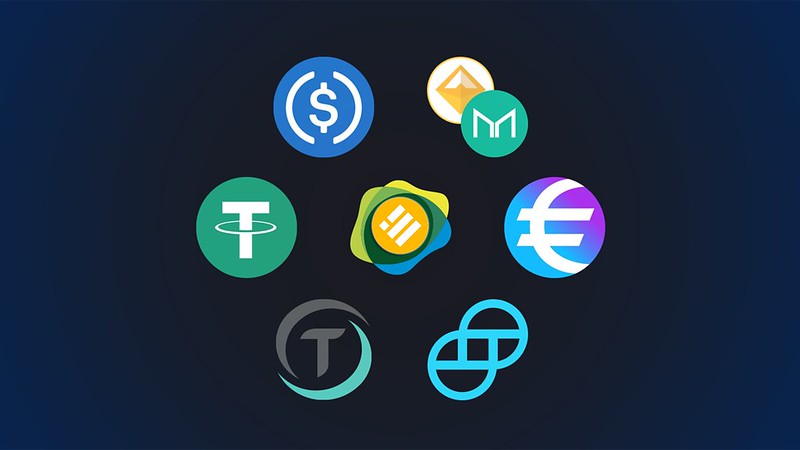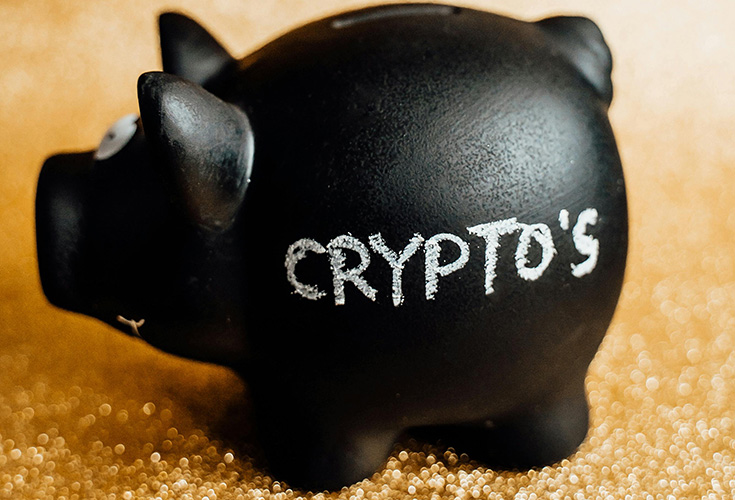
Have you ever heard of a stablecoin? It’s a brand-new concept in cryptocurrency that has been gaining popularity lately. For many, the idea of a stablecoin may sound too good to be true – but it doesn’t have to be!
A stablecoin is a digital currency or asset with values linked to real-world assets, like the US Dollar. This means their value does not fluctuate significantly and remains relatively stable compared to other digital currencies like bitcoin. This fascinating concept aims to provide an alternative store of value for those wary about volatility in the traditional markets.
As its name suggests, a stablecoin revolves around stability and consistency – making it attractive for investors who want an option outside traditional stock markets. What makes them even more appealing is their potential for use in transactions between two parties, allowing them instantaneous transactions without any third-party involvement!
Ultimately, if you’re looking for an investment option that offers low risk while maintaining some upside potential, consider giving a stable coin some consideration. They provide lower price volatility, making long-term investments easier on your wallet and making day-to-day purchases with cryptocurrencies feel much safer too!
What Is A stablecoin?
Stablecoins are digital cryptocurrencies that aim to keep their price stable. They work differently from other digital money like Bitcoin, which can quickly change value. Stablecoins are usually connected to something valuable, such as the U.S. dollar or gold, so their price doesn’t change too much. Tether is the most well-known stablecoin backed by U.S. dollars in a bank account.
The idea of stablecoins has become increasingly popular as more investors seek ways to mitigate risks associated with highly volatile cryptocurrency markets. Stablecoins offer investors an opportunity to trade without fear of prices crashing unexpectedly or eroding gains made through investment holdings, allowing them access to the same opportunities in the crypto market without taking on excessive risk.
The potential for widespread adoption of stablecoins is enormous – not just providing individual traders greater security and protection from losses due to market fluctuations but potentially becoming a global currency replacing paper money one day! As demand increases, we’re likely seeing even more variations appear, which may further increase the trustworthiness and reliability of this virtual payment system while providing users with increased flexibility and control over their finances – something sure to be welcomed by all!
Types Of Stablecoins
When it comes to what makes a coin stable, you’ve got options. Stablecoins come in various forms, from fiat-collateralized ones backed by real-world currencies to cryptocurrency-backed tokens. In most cases, they are designed to be pegged to another asset with minimal volatility, giving investors the peace of mind that their funds won’t be wiped out overnight due to huge swings in the crypto markets. Let’s look at four stablecoins available today and how they work.
Fiat-collateralized Stablecoins
These coins provide stability by being backed by real-world currencies like the US Dollar or Euro. This type ensures that every coin issued is backed by one US dollar held in reserve – meaning that for every $1 worth of coin you receive, there will always be $1 worth of fiat currency backing it up. The downside? You need someone else to manage your funds, limiting control over them.
Commodity-collateralized Stablecoins
Commodity-backed coins offer users security since they use real assets like gold or oil as collateral instead of fiat currencies. If you value real asset risk mitigation, then these might be right for you – but bear in mind that liquidity can be an issue with this type, so if you want easy access to your money later on down the line, then perhaps look elsewhere!
Cryptocurrency-collateralized Stablecoins
As their name suggests, this type is backed by other cryptocurrencies rather than fiat or commodities – usually Bitcoin or Ethereum due to their high liquidity relative to other cryptocurrencies. While there’s less risk involved here (since these are virtual assets, after all), it should still be noted that this type has no external price support.
Algorithmic Stablecoins
If you’re looking for a crypto asset with minimal fluctuations in value, then Algorithmic stablecoins are a great choice. They get their stability from algorithms that adjust the coin supply, so it can always match the same amount of fiat currency or another commodity to keep its value pegged. They require less capital investment and administrative overhead than other types of stablecoins.
How Do Stablecoins Work?
Stablecoins offer a unique way to transact money without the volatility of regular cryptocurrencies. But how do these coins work? Here’s the lowdown on what makes stablecoins tick.
At the heart of every stablecoin is an algorithm that helps keep its price at an equilibrium level with real-world currencies. This means that when fiat currency goes up, so does the price of a stablecoin; when it dips, it takes a corresponding dip too. Most stablecoins are pegged to one particular asset like gold or multiple global currencies to ensure this occurs.
To maintain the peg, stablecoin networks use smart contracts and digital algorithms that automatically adjust coin supply according to market conditions. For instance, if people buy high amounts of a specific coin – say USDC – its network will issue more coins to not raise prices past its target rate. On top of all this, collateralized reserves are often held to back each token up with real assets should any losses occur due to volatile market swings or other unforeseen factors.
All in all, there’s plenty at play behind the scenes to ensure you can always trust your coin’s reliability and worthiness as a reliable payment form, no matter the situation!
Are stablecoins Regulated?
Regulators and authorized issuers heavily regulate and control stablecoins, requiring them to meet all the terms and conditions set out by the authorized issuer. To stay stable, they must maintain a fixed, at least 1:1 ratio with a major fiat currency like the US Dollar. As such, there’s plenty of oversight from financial authorities to ensure the stability of these digital assets – talk about peace of mind!
Government financial institutions such as the SEC in the US have begun looking into ways to regulate them properly so users feel secure when using them for transactions. We must stay up-to-date on regulatory changes so our investments remain safe and compliant with applicable law.
Advantages Of Stablecoins
Stablecoins provide distinct benefits regarding stability in value, reduced volatility, instant transactions and lower fees, decentralization, and transparency. Let’s take a deeper dive into the four main advantages of stablecoins!
Stability In Value
Stablecoins possess low volatility and do not fluctuate wildly like other cryptocurrencies, making them an attractive option for storing or transferring funds quickly. On top of that, real-world assets such as gold or fiat currency control this currency, so their value is far less volatile than other types of digital currency.
Less Volatile Than Other Cryptocurrencies
Since most stablecoins are backed by a basket of assets or even just one asset (fiat currency), they can effectively minimize many volatility risks associated with digital currencies. This means traders can use these coins confidently, knowing there won’t be too much price variation over short periods.
Instant Transactions And Lower Fees
Transferring money across borders used to take days — now, you can do it in a matter of minutes! Stablecoins offer near-instant transactions at significantly lower rates than traditional methods like banks, making them ideal for international payments where speed is essential. Their low transaction fees make them even more attractive for those looking to save money on cross-border payments.
Decentralized And Transparent
A significant benefit of using stablecoin is its decentralized nature — no government interference or manipulation involved here! All transactions occur peer-to-peer without interruption; plus, all activities with these coins are entirely transparent, so users always have complete control over their funds without worrying about privacy breaches or hacks occurring.
Disadvantages Of Stablecoins
The reality of Stablecoins comes with several potential drawbacks when you use them. From counterparty risk to regulatory risks to the limited upside potential and dependency on collateral, let’s look closely at some notable disadvantages of stablecoins that could throw a wrench in their use.
Counterparty Risk
With any financial aspect, trust is always involved. When dealing with stablecoins, there are certain underlying risks related to counterparty failure, which can result in sudden losses or investments not performing as expected.
Regulatory Risks
As cryptocurrency continues gaining traction and broader acceptance by governments worldwide, it has opened the door for increased regulation and taxation laws that can impact how one uses stablecoins. This could reduce returns if taxes become too high or regulations become too restrictive.
Limited Upside Potential
Since they are pegged against one fiat currency like USD or Euro, this limits their upside potential since they may be unable to appreciate beyond their base value against another currency. This makes them significantly less attractive than other cryptocurrencies when looking for long-term gains from an appreciation standpoint.
Dependency On Collateral
Lastly, since most stablecoin issuers require some form of backing from real assets such as gold or fiat currency deposits for tokens to retain their value and remain liquid, this means users must rely on third parties for reliable custody solutions when holding these coins over long periods which can create unnecessary risk exposure should something go wrong along the way.
Use Cases for Stablecoins
All the uses for these coins make them so appealing – think trading and hedging, cross-border payments, remittances and micropayments, and asset-backed tokens. Let’s quickly dive into each one of these use cases for stablecoins!
Trading And Hedging
Traders can take advantage of the chance to make money off the stock market with stablecoins without facing volatility. In addition to this, they may use these stablecoins to hedge against changing market conditions – providing them a buffer when purchasing cryptocurrencies.
Cross-Border Payments
Since no particular nation or currency interrupts or controls stablecoins, businesses of all sizes use them for international payments. There’s no need to convert currencies, worry about exchange rates, or worry about fluctuating fees – making sending and receiving money more accessible than ever before!
Remittances And Micropayments
Thanks to their effective anti-fraud measures combined with low fees associated with remittances and small transactions (or micropayments), stablecoins offer fast solutions for exchanging value across borders quickly – especially beneficial for those living in regions where banking services are scarce or unreliable.
Asset-Backed Tokens
Asset-backed tokens allow consumers around the globe access to financial services they might not usually be able to access via traditional institutions – allowing them greater liquidity when it comes time to sell assets like stocks or bonds too! This opens up many possibilities and opportunities previously unavailable outside these select few institutions!
Stablecoins Vs. Traditional Cryptocurrencies
Stablecoins and traditional cryptocurrencies are completely different digital coins operating on numerous levels. While Stablecoins are pegged to a fiat currency or an asset like gold. On the other hand, any central bank or government does not control traditional cryptocurrencies. That is why traditional cryptocurrencies are more volatile than stablecoins.
Some crypto enthusiasts argue that no one should control cryptocurrency since its value lies in having no centralized control; however, supporters of stablecoins contend that having some form of backing provides stability which is essential for customers who want to protect themselves from wild price swings during times of market uncertainty or speculation. Ultimately, both have their uses and benefits depending on what type of investment strategies you wish to implement.
Future Of Stablecoins
stablecoins have a bright future ahead. These are ideal for daily transactions because they are stable, affordable, and user-friendly. The demand for stablecoins continuously increases as blockchain technology becomes more mainstream. This rising popularity will drive innovation, making stablecoins more convenient and secure. Moreover, the writer expects more decentralized exchanges to emerge in the market, offering more options for cryptocurrency users. All indications suggest a prosperous future for these specific tokens.
On another note, we must remember the true goal of stablecoins; asset preservation and store value. As such, new implementations that offer better protection against inflationary pressures will likely emerge – ensuring your money works smarter for you over time. There are many possibilities in the field of privacy-focused financial control that remain unexplored.
Conclusion
Stablecoins offer a huge potential to shape the future of money and finance. They are an attractive option for people looking for a safe and secure way to invest their hard-earned money without bearing the risks of price volatility. Stablecoins provide a much-needed alternative with their ability to maintain steady value over time while still providing access to global markets, allowing users to trade on exchanges across borders seamlessly. With their capacity for near-instant transactions, low costs, and reliable security protocols, it’s no wonder that more and more people are turning towards them to reduce financial risks.








